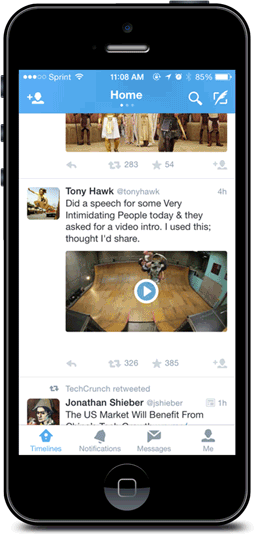Accessibility Tools
PMG Digital Made for Humans
Top 5: Why Native Social Media Video Works
Content is KING! So tired of hearing that… Did people ever think about how to USE good content? Nope.
The content explosion of 2014 led brands and agencies to develop buttloads of new content, but there was never a good medium for them to be able to present them to audiences of their choice. So what we ended up with was tons of overspent dollars and lackluster view metrics because posting a YouTube video to Facebook or Twitter just made sense. What about the view metrics? What about the engagement? Apparently, those things didn’t matter.
Fast forward to early 2015… Facebook and Twitter have defined their video opportunities and developed units that are not only native to their respective platforms, but also offer comparable performance to YouTube. Gone are the days of linking your posts/tweets with a YouTube link, these new native units offer larger real estate and auto play in a user’s feed. Drooling yet?
Like we promised, here are our Top 5 reasons why you should be running more native video ads through social media.
1. Engagements through the native platforms are significantly cheaper. We’ve have seen our Cost per View rates go down as low as $0.02 vs. roughly $0.25 (average) on YouTube.
2. Facebook and Twitter offer retargeting options with custom audience and website visitor data. These features will help to drive higher engagement rates and opens up the door for more direct response focused campaigns.
3. The Facebook units F@#%ing autoplay in the user’s feed! This is my favorite. By making the first five seconds of your video absolutely beautiful, users will see the motion in their feeds/timelines.
4. Performance metrics mirror that of YouTube. (*insert whiny voice) “But it doesn’t have analytics like YouTube…” Shut up you baby. It does now. View Through Rates, Percentage of videos watched, etc… it has it all now.
5. Videos that play in the feed/timeline are larger than the standard YouTube embedded window. The new video units take up more real estate in the feeds. That being said, you can expect to see higher view rates through the native units vs. the embedded YouTube link.
Here are some examples of what they could look like:
Facebook:

Twitter:

There. You have the 5 reasons why we like the new video units on Twitter and Facebook. Test for yourself and see how well these perform for you! Make sure that you’re targeting is set appropriately and then release the Kraken!
Stay in touch
Bringing news to you
Subscribe to our newsletter
By clicking and subscribing, you agree to our Terms of Service and Privacy Policy





